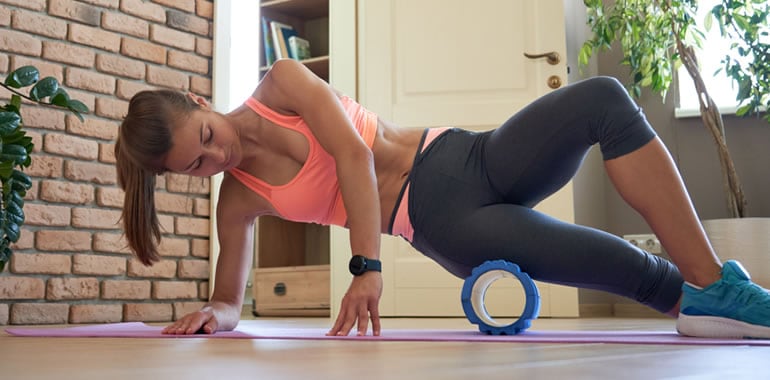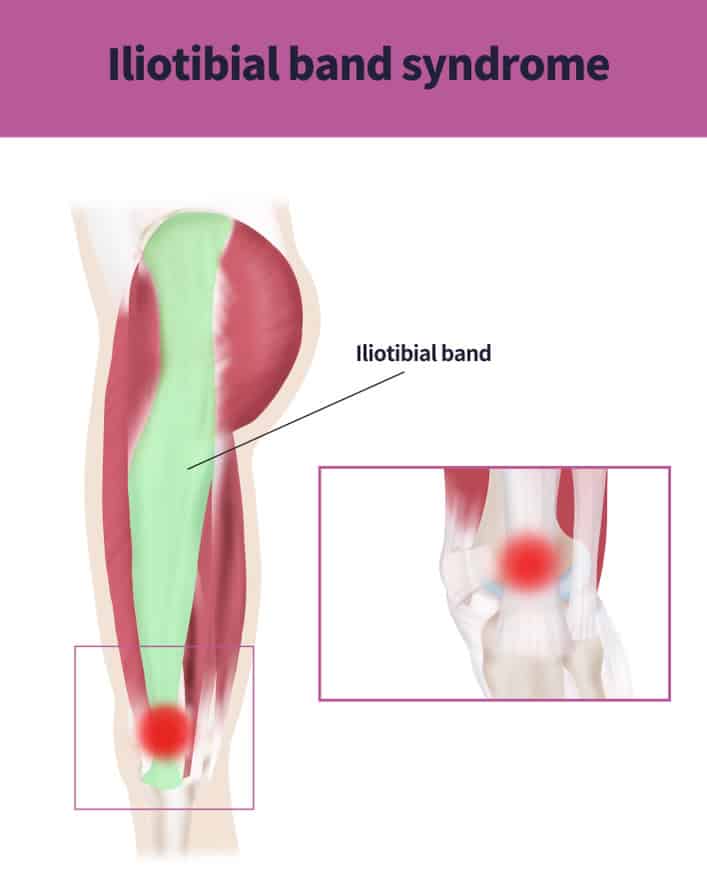
Foam Rolling the ITB(Iliotibial band) has become a popular technique to supposedly decrease tightness in the lateral leg/hip/knee region, increase mobility and decrease hip/knee pain.
I see physical therapists , trainers, and healthcare practitioners prescribing the foam roll quite often for people with knee pain/hip problems. In addition, I see people at the gym constantly rolling out their ITB for 10-15min(sometimes longer!)
Doing this can be quite painful! (I know from personal experience . I used to do this!)
The Foam Roll is a great tool and has many benefits, but not for releasing tightness of the ITB or decreasing your knee/hip pain.
If you are foam rolling your ITB, please read on!
I’m a firm believer that knowledge is power! My mission is to educate and give you solid research based information that will help you move with better quality of movement without painful rolling!
I encourage you to STOP rolling out your ITB and review the information I’m sharing so that you can discover the root cause of your problem and resolve it!
Foam rolling may not be the answer for you.
One of my many mentors ,Gray Cook, a leader in the physical therapy world states:
“If your foam roller hasn’t fixed it by now, it probably never will.”
Let’s first discuss briefly what the ITB is. The ITB is a band of tendinous tissue (it is not a muscle) that runs from the lateral part of the hip/thigh region and attaches below the knee.

Pain in the lateral thigh region has been labeled "ITB Syndrome."
Pain associated with ITB syndrome usually shows up as pain on the outside part of the knee(especially in runners).
There can be many contributing factors to ITB syndrome such as poor footwear and compensation of the foot (over-pronating).
However, the root cause of tightness or dysfunction is related to hip instability. The ITB becomes tight because it may be compensating for weakness in the glutes or adductor (inner thigh) muscles.
It can also be related to poor core instability creating hip/lumbar dysfunction.
Often the patient may present with dysfunctional movement patterns by turning the hip in or out or perhaps dropping the hip on one side due to weakness of the glute medius.
This can cause asymmetry in pelvic alignment along with abnormal gait patterns . Overtime, this can contribute to osteoarthritis of the hip due to abnormal weight distribution through the hip and lower extremities .
The bottom line is if the muscles from the hip or even the core are weak or tight the ITB may compensate by trying to stabilize the hip and lumbar spine.
It does this by gripping the lateral hip muscles which will contribute to weakness and tightness.
You may experience temporary relief using the foam roll. However, if you don't address the root cause of why things are tight, weak or correct the hip instability problem ,it is likely that the symptoms will eventually return and feed into more dysfunctional compensation patterns.
Unfortunately, I have found that many people have been misled by information on google, trainers, physical therapists, physicians, and the fitness industry.
Here are a few myths I would like to debunk.
“If I foam roll my ITB it will decrease the the tightness I have”
I’m sorry to say that foam rolling the ITB will not decrease the tightness of the ITB. It actually is impossible to stretch the ITB (remember it is not a muscle) since it takes a huge amount of force to do so.
A study in 2008 determined the amount of force it would take to lengthen the IT-band. The study stated it would take ~2,000 lbs of force to lengthen your IT-band 1%. They described this large amount of force as “far outside the human physiologic range.”
That also means that stretching the ITB is not possible.
“Foam Rolling Will Help Get Rid of My Knee Pain”
A tight ITB is not the reason for your knee pain and foam rolling your ITB isn’t going to fix your knee pain. There are a multitude of reasons why you may be experiencing knee pain.
It is important to discover the root cause of your hip or knee pain so that it can be treated properly.
You may have been told by your therapist or orthopedic doctor to foam roll your ITB and that it would help your knee pain. Trust me it won’t fix your knee pain. I was told the same thing and for months I foam rolled my ITB and it didn’t change a thing!
If you find foam rolling is making a difference for you and helping you then by all means include it in your care.
“Foam Rolling My ITB Will Give Me More Range of Motion"
Foam rolling compresses the ITB and it can not be stretched for the reasons above. The key is to understand why a structure is tight. What happens when that tight structure is trying to stabilize you?
The key is to get assessed by an experienced physical therapist who can determine why your ITB is tight, what muscles might be inhibited and what muscles maybe overactive and creating dysfunctional compensation patterns.
Here at Custom Fit Physical Therapy we assess and don’t guess!
We conduct a comprehensive movement assessment to discover the root cause of your problem, figure out why you are tight, evaluate your movement patterns, and perform a variety of tests to determine which muscles are inhibited and which muscles are facilitated(overactive).
Here at Custom Fit Physical Therapy we perform a comprehensive functional movement assessment to discover the root cause of your problem and determine where you are compensating.
This in depth assessment process allows us to create and map out a solid plan of care and treatment in order to promote healthy movement patterns, release the tight muscles, activate the weak muscles, and create stability in your hips, core and lumbar spine.
If you are struggling with hip or knee pain contact us today for a FREE Discovery Session so that you can resolve your problem and get back to the things you love to do!


